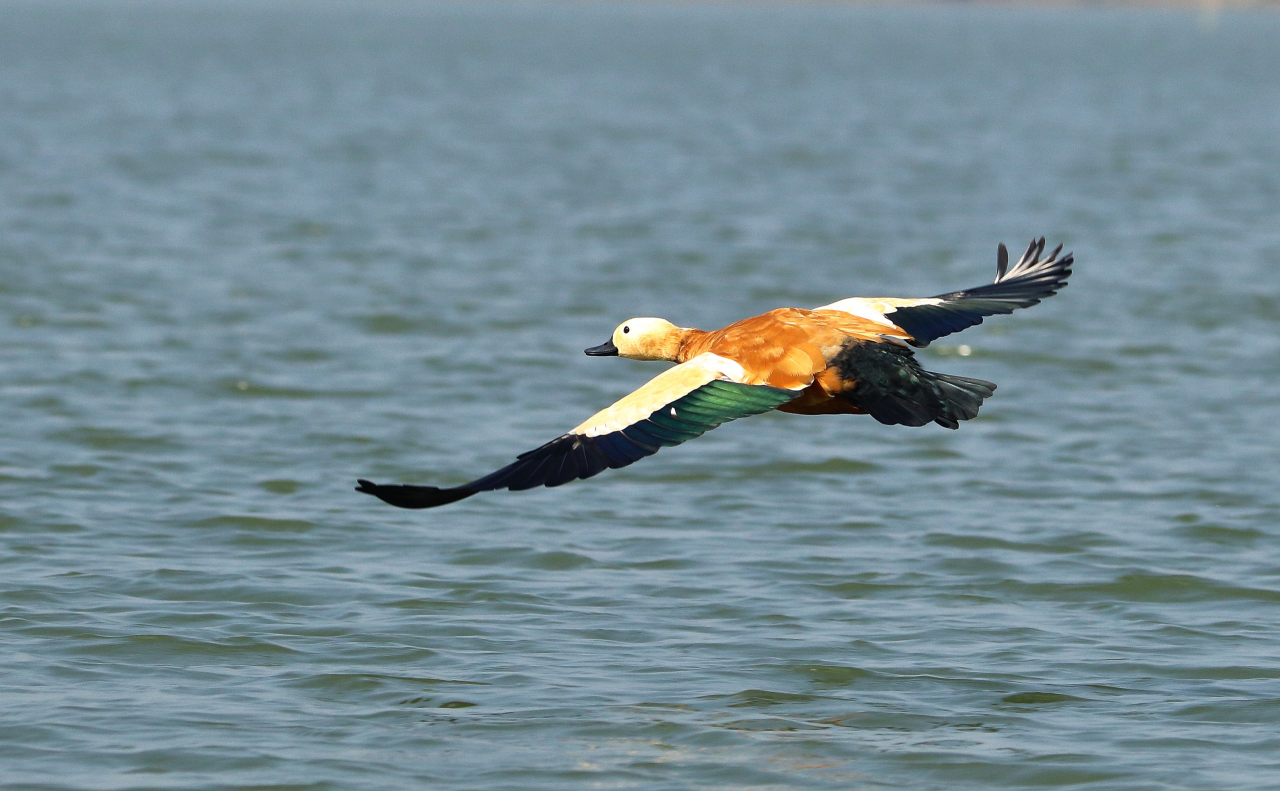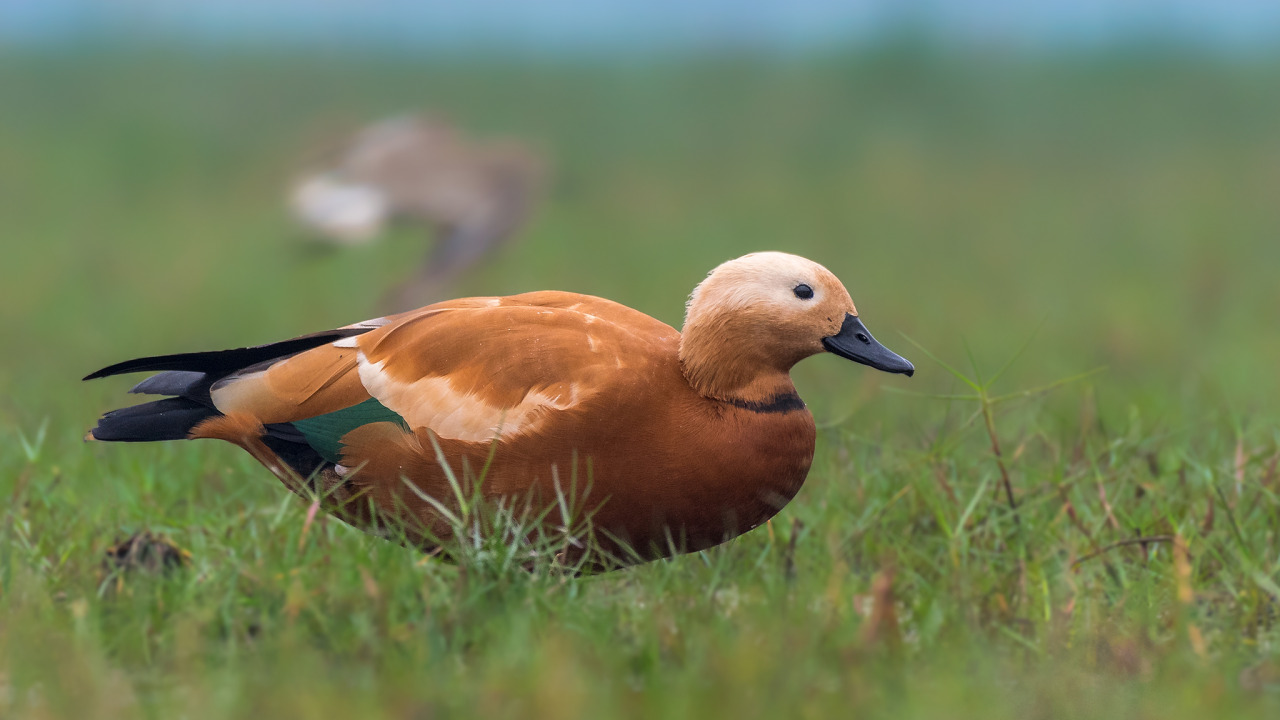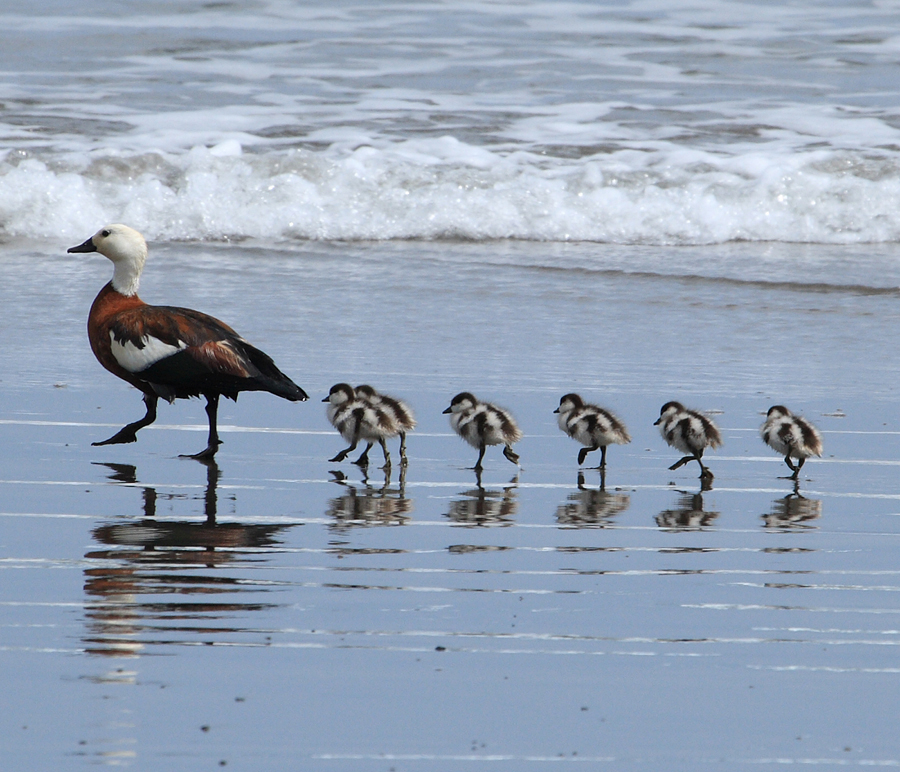Tadorna

Ruddy Shelduck by Michael Gäbler, CC BY 3.0
Name: Tadorna
Status: Extant
First Described: 1822
Described By: Boie
Classification: Dinosauria, Saurischia, Eusaurischia, Theropoda, Neotheropoda, Averostra, Tetanurae, Orionides, Avetheropoda, Coelurosauria, Tyrannoraptora, Maniraptoriformes, Maniraptora, Pennaraptora, Paraves, Eumaniraptora, Averaptora, Avialae, Euavialae, Avebrevicauda, Pygostylia, Ornithothoraces, Euornithes, Ornithuromorpha, Ornithurae, Neornithes, Neognathae, Galloanserae, Anseriformes, Anseres, Anatoidea, Anatidae, Tadorninae
Referred Species: T. cristata (Crested Shelduck, extinct?) T. tadorna (Common Shelduck, extant), T. cana (South African Shelduck, extant), T. ferruginea (Ruddy Shelduck, extant), T. tadornoides (Australian Shelduck, extant), T. variegata Paradise Shelduck, extant)

Paradise Shelduck by Dick Daniels, CC BY-SA 3.0
We go back to Shelducks today with Tadorna, the ultimate shelduck, containing six species - five living, one possibly extinct. These are semi-terrestrial birds, kind of in between ducks and geese in terms of size and body shape, though they are considered ducks in general and are their own separate evolutionary lineage. These birds primarily live in the Eastern Hemisphere and have distinctive green, black, and white wing feathers. They eat primarily small shore animals like crabs, as well as some grasses. There might be some fossil evidence of this genus from the Early Pliocene, indicating this genus first appeared between 5.33 and 3.6 million years ago, in the Zanclean age.

Crested Shelduck by Joseph Smit, in the Public Domain
The Crested Shelduck is potentially the earliest derived species in the genus, and if it is not extinct then it is critically endangered and almost unknown in the wild. Originally from Japan, if it is still alive it is mainly known in China, in relatively hidden and limited locations. It has not been decidedly sighted since 1964, though there have been occasional possible sightings. These birds were (are?) sexually dimorphic, with greenish-black crowns and primaries on the males, and the females having large white eye rings and black crests. They are slightly larger than mallards in terms of size, and they live primarily in wetland and deep water habitats, especially near the coast. They are probably migratory, going from Siberia in the breeding season to Korea, Russia, and Japan in the winter, feeding primarily on aquatic vegetation and mollusks and crustaceans. It has never been a very common duck, but due to habitat loss, hunting, and overcollecting, fewer than 50 species might be left in the wild - and those present might lose their habitat due to the Tumangan Development Project. Truly, a soberingly depressing tale.

Common Shelduck by Dick Daniels, CC BY-SA 3.0
The Common Shelduck actually might also be one of the earliest derived members of the species, living around Afroeurasia and luckily not considered threatened with extinction. The bird looks sort of like a small, short-necked goose, with extremely striking plumage and even little bill flaps on the males. The sexes look mainly similar, with the females smaller and duller, especially during the breeding season. They breed in central Asia and Scandinavia, and winter in the Middle East, China, Indian Subcontinent, and southern Iberian Peninsula / northern Africa. They can, however, be found year-round in Western Europe and the British Isles. They live mainly along coastlines, associated with estuaries, tidal mudflats, and lakes and rivers near the sea. They breed in burrows, treeholes, and haystacks, and in order to evade predators the young dive underwater while the adults fly away as decoys.

South African Shelduck by Carlos Delgado, CC BY-SA 4.0
The South African Shelduck is also not really threatened with extinction, and as indicated by its name its primarily known from southern Africa such as Namibia and…. South Africa. Many of the birds go north-east for a moulting ground in the winter, which leads to large concentrations of the bird. They live in lakes and rivers in the countryside, and they use mammal burrows for their nests. Other than the breeding season, they’re usually quite nomadic, living in mated pairs wandering about the area. They are mostly brown, with varied coloring on the wings and tail.

Ruddy Shelduck by Sayanti Sikder, CC BY-SA 4.0
The Ruddy Shelduck, or as I like to call it, the Halloween Duck (when it is not flying its colors are almost entirely orange and black), is a migratory bird not considered threatened with extinction from India, Central Asia, Europe, and North Africa, and they can be very large birds, growing up to 70 centimeters in length. They have iridescent feathers on their wings that break up the orange-black plumage patterns, but those are only visible during flight. They make very loud honks as calls, which is useful for them as they usually live only in small flocks or in pairs. They mainly breed in southeastern Europe across Central Asia, and they spend the winter season in India. They breed in high altitude areas and in swamps, and can most frequently be found in inland water such as lakes and rivers.

Ruddy Shelduck by Mprasannak, CC BY-SA 4.0
Interestingly enough, the Ruddy Shelduck is primarily nocturnal, a fairly unique ecology for waterfowl in general. It lives on grasses, water plants, and invertebrates, and it can dabble and up-end to gather food in water. They have strong pair bonding, with the mates pairing up for life and being very aggressive to other pairs in the breeding season. They lay their nests in trees, crevices, and burrows, lining the nest with feathers and grasses. THey lay about eight eggs, with the females incubating the eggs and the males standing guard. The eggs hatch in about a month, and fledge in close to two months, and the families stay together for a long time after fledging.

Australian Shelduck by J. J. Harrison, CC BY-SA 3.0
The Australian Shelduck is a Shelduck known from - you guessed it - Australia, primarily in New South Wales and Tasmania. They aren’t considered threatened with extinction, and the males and females look primarily the same - brown and orange, with some green and black feathers on the wings and head - though the males have white patches on the snout, eyes, and wings. They breed in Southern Australia and Tasmania, and they move farther north during the winter, and are known for being very wary and shy.

Paradise Shelduck by Dave Young, CC BY 2.0
The Paradise Shelduck is our last species in the genus, also luckily not threatened with extinction. They also don’t live in large flocks, primarily living in lifelong pair bonds and small families after the eggs hatch. They are known from New Zealand and nowhere else, so honestly in my opinion its a small miracle they aren’t threatened with extinction. They graze on grass and weeds, even crops, and they tend to be similar in coloration to other Shelducks, though the females are the ones with white patches in their plumage.
Buy the author a coffee: http://ko-fi.com/kulindadromeus
Sources:
https://en.wikipedia.org/wiki/Shelduck
https://en.wikipedia.org/wiki/Crested_shelduck
https://en.wikipedia.org/wiki/Common_shelduck
https://en.wikipedia.org/wiki/South_African_shelduck
https://en.wikipedia.org/wiki/Ruddy_shelduck


















